Short Book Reviews
Hanna Kryszewska, Poland
Hanna Kryszewska is a teacher, teacher trainer, trainer of trainers. She is a senior lecturer at the University of Gdańsk, Poland. She is co-author of resource books: Learner Based Teaching, OUP, Towards Teaching, Heinemann, The Standby Book, CUP, Language Activities for Teenagers, CUP, The Company Words Keep, DELTA Publishing, and a course book series for secondary schools: ForMat, Macmillan. She is also co-author of a video based teacher training course: Observing English Lessons. Hania is a Pilgrims trainer and editor of HLT Magazine. E-mail: hania.kryszewska@pilgrims.co.uk
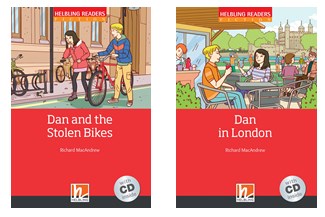
Helbling Readers Fiction. Dan and the Stolen Bikes. R. McAndrew. Helbling Languages (2017). ISBN-978-3-99045-397-1, pp 68. Dan in London. R. McAndrew. Helbling Languages (2017). ISBN-978-3-99045-510-4, pp 76. Books in this series of graded reading materials for teenagers come at five levels, for example Dan and the Stolen Bikes is pitched at level 1 (A1 Breakthrough), and Dan in London at level 2 (A1 Breakthrough/ A2 Waystage). The stories are a good read and continue the adventures of Dan started in Dan and the Village Fete, Dan and the Island Mystery and Dan and the Hong Kong Mystery. Each story has a message for the readers and promotes different values. On the language level, the learners first become familiar with some lexis in the pre-reading tasks. Then as they read the story they can see the new words marked with a dot (and explained at the bottom of the page). They can also listen to the whole story and do some activities available on an accompanying audio CD. Finally, there are some additional after reading activities and more activities to be found at www.helbling-ezone.com . The illustrations are pleasant to the eye, and I am sure the books will be popular among young learners as additional reading material, just like the other titles in the series.
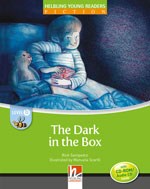
Helbling Young Readers Fiction. Helbling Languages (2017). The Dark in the Box. R. Sampedro ISBN 978-3-99045-509-8, pp 32. Books in this series of graded reading materials for young learners of English are at the Starters and Movers levels according to the YLE, or levels 1-3 according to the Trinity Exams scale. This story is interesting and told in basic English using simple grammar: present tenses and modal verbs, and basic vocabulary. Apart from language input and practice, the stories have a message such as in the case of this story: how to cope with the fear of darkness. Before the students either hear the story from the CD or read by the teacher following it in the book, they do some exercises in the Play station section which pre-teaches and activates the language the learners need to follow the story. The activities which are on the CD-ROM are interactive and fun. The stories themselves are very good and often charming, and on each two page spread there is a little icon, a bug, a duck or a crab which gives the readers an extra task such as answering a personal question, working your way through a maze or spotting something in the picture. At the end of each book there is Play Station 2 section which revises some of the language in the story, or a Play Station Project like making a sand bottle, or making a board game. There is also a mini dictionary. The font is young reader friendly, and the books are beautifully illustrated. The CD-ROM contains an audio book and some activities, language games, karaoke, chants, story sequencing activities and an audio-visual dictionary.
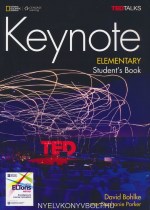
Keynote. Elementary. Student’s Book. D. Bohlke with S. Parker. NLG and CENGAGE Learning (2017.) ISBN 978-1-337-27391-6, pp.166. This is another level of a truly innovative young adult and adult six level course based on TED talks which provide the learners with inspiring ideas as a springboard for language work. In the course the learners become familiar with the ideas presented by the TED keynote speakers, and then explore these ideas by developing a deeper understanding of the world and various significant issues worth learning about. These inspiring topics also lead to developing the learners’ ability to express themselves powerfully in private and professional contexts. The learners develop their listening skills as well as their critical thinking and presentation skills. The topics, among others include passions, spending money, talents, technology and challenges. Each unit in the course book has a clear grammar, vocabulary and pronunciation focus. The four language skills: reading, listening, speaking and writing, are developed throughout the course, using the topics as a springboard. Finally a lot of attention is given to speaking and presentation skills. The course book comes with a student’s book, workbook with audio CD’s, teacher’s book with audio CD’s, MyELT online workbook, an interactive eBook, and various presentation tools for teachers. More materials and information about the course are available from www.eltkeynote.com
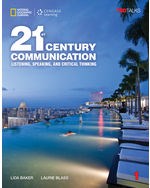
21 Century Communication 1. Listening, Speaking, and Critical Thinking. L. Baker and L. Blass (2016). ISBN 978-1-35-94529-0, pp 184. NGL. CENGAGE Learning. This book is part of a four level course which uses TED Talks to teach learners how to think critically and to communicate effectively. The talks are used as models for successful communication and are explored to improve the learners’ listening comprehension skills in personal and professional contexts. The content of the talks and their treatment also develops the learners’ essential 21st century skills as the learners practise note-taking skills, critical thinking and prioritising. The speakers include Joe Smith on how to use a paper towel, Camille Seaman on photos from a storm chaser, Sanja Dastoor on a skateboard with a boost or Daria van den Bercken on playing the piano. Each unit includes work on pronunciation and sets an assignment such as individual or group presentations, or participating in a panel discussion. The student’s book is fully blended with on-line workbooks with an audio and video programme and automatically graded language practice activities. More information is available here
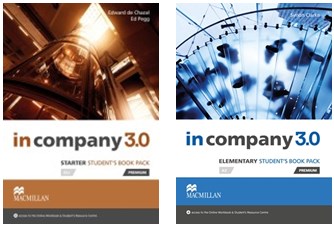
in company 3.0 Starter. Student’s Book Pack. E. de Chazal and E. Pegg. Macmillan. (first published 2015), ISBN 978-0-230-45882-6, pp. 94. in company 3.0 Elementary. Student’s Book Pack. M. Powell. Macmillan. (first published 2004, this edition 2015), ISBN 978-0-230-45500-9, pp. 158. These two course books are part of a five part revised 2003/2004 course (the Starter level is new and has been added to the 2013 course). The In Company course has been highly successful and now it has been updated to suit the needs of learners who want to make the best of blended learning. The content of the books has been updated and expanded, however, like the previous editions, it has a strong, skills-based approach. The language presented in each unit revolves around ‘business trends, people skills and everyday business scenarios’. So the learners can see immediate practical and professional application of the language they learn. The strength of the new edition is the use it makes of blended learning, i.e. using traditional in-class teaching with on-line learning. The publishers offer an innovative integrated Online Workbook and a Student’s Resource Centre which are available through the new Big tree learning platform. More innovations include: business scenarios with challenging video case studies which resemble real-life business situations, extensive video footage, and video interviews featuring global business professionals, and texts and audio materials coming from a range of international sources. The Teacher’s Resource Centre provides easy access to class audios, more video footage, and additional photocopiable materials with classroom activities, tests and worksheets. This is a truly modern course, and I am sure both the learners and the teacher will benefit immensely from using the book (the teacher by using or becoming familiar with state-of-the-art educational technology, the students by learning in a modern blended learning classroom).
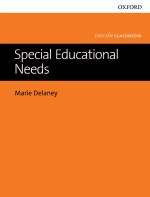
Special Educational Needs Teaching. M. Delaney (2016) OUP. ISBN 978-0-19-420037-0, pp 104. This book is another title in the new OUP series: Into The Classroom, which is different from the old well established OUP series: Resource books for teachers. The books in this new series are short and practical guides aimed at teachers of primary and secondary school learners. The books help the teachers to explore new teaching tools and techniques, or to become familiar with new educational policies and ways of implementing them in the classroom. The title in question focuses on how to work with learners with special educational needs in an inclusive learning and teaching environment. With the new trends in education regarding inclusion, increasingly more teachers need the right approach, the necessary skills and techniques to work in such schools or classes. Many teachers who got their qualifications some years ago may not have received any introduction into SEN as these issues were not part of the pre-service teacher training syllabus. First of all, the book looks at the types of SEN and ways of identifying them, as well as common problem areas such as memory, communication and self-esteem. The author focuses on the most common areas such as dyslexia, dyspraxia, ADHD (Attention Deficit Hyperactivity Disorder), SEBD (Social, Emotional and Behavioural Difficulties), ASC (Autism Spectrum Condition) and SLD (Speech and Language Difficulties). She characterises each of them briefly and then proposes some practical teaching strategies, including classroom management. The author addresses three key areas of working with SEN learners: differentiated teaching, collaboration and assistive technology. Highly recommended.
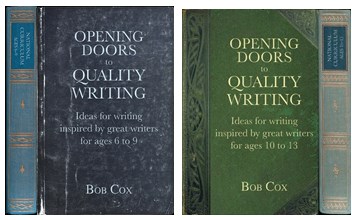
Opening Doors to Quality Writing: Ideas for writing inspired by great writers for ages 6 to 9. Opening Doors to Quality Writing: Ideas for writing inspired by great writers for ages 10 to 13. B. Cox (2016) Crown House Publishing. ISBN 978-178583013-6, pp 198. ISBN 978-178583014-3, pp 214 (respectively). These two books present creative and stimulating ideas and strategies for using traditional literary text with young learners aged 6-10 or 10-13. The author uses traditional poems, for example, “The New Vestments” by Edward Lear, “A Child’s Thought” by Robert Louis Stephenson, and “The Magnifying Glass” by Walter de la Mare or fragments of prose, from for example, ”Rip van Winkle” by Washington Irving, “Tess of the D’Urbervilles” by Thomas Hardy, or “The Wizard of Oz” by L. Frank Baum. The activities in the book promote creativity through flexible and imaginative exploration and exploitation of quality literary texts. The activities are wound around the texts and the visual material provides a stimulus to create high quality writing. The books are originally intended for native speaker children, but teachers working with learners of English will find in the books a lot of inspiration for work on the four language skills, vocabulary, language appreciation of language, improvisation and creativity. You can tell that Bob Cox is a very experienced teacher as the sequences of activities created around a given text have a very good flow and development, their rationale is clearly explained and laid out, where necessary with the use of diagrams or flow charts. A very inspiring resource.
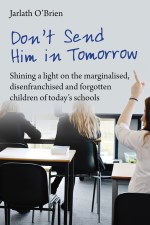
Don't Send Him in Tomorrow: Shining a Light on the Marginalised, Disenfranchised and Forgotten Children of Today's Schools. J. O’Brien (2016) Independent Thinking Press. ISBN 978-178135253-3, pp 181. This book has been written by a teacher who has been working in special schools for fifteen years, and it is a result of his growing frustration with the kind of provision available to SEN (Special Educational Needs) children. His observation is that with the focus on the expected standards set by the government and exam results quota, the progress and achievements of SEN children are neglected. Teachers engaged in SEN education as well as parents of SEN children fight “tooth and nail so that the needs of their children are met”. The author maintains there is a clear lack of understanding of the problem. So what he does is present a lot of case studies which he then analyses attempting some kind of generalisation, and then finally offers some solutions. The case study feature is a vital key to understanding SEN, as every child and their problem is unique. However, if the children are to fit into the educational system, some form of generalisation is vital. The book is a powerful read divided into nine chapters devoted to, among others, observation, behaviour/ conduct, exclusion, statistics and reports, being a parent of a SEN child/ understanding the situation of the parents. The book is a powerful and very educational read for every teacher.
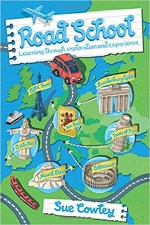
Road School: Learning through exploration and experience. S. Cowley (2016) Crown House Publishing Limited. ISBN 978-178583114-0, pp 217. The book is a special kind of diary, which can be inspiring for parents and teachers alike. It is a true diary of Sue Cowley who together with her partner and children quit the traditional system of education they were stuck in, and instead embarked on an educational journey. They explore England, the Netherlands, Germany, Italy, Portugal, France and China. Each chapter has a similar structure: anecdotal description of various experiences, lessons learned in a given country presented in ten brief points and a special feature. The special feature include topics like: stepping out of the system, practicalities, cultural literacy, travel as an education, travelling with children, types of parenting and the school curriculum. The book makes you reflect on education: how much children learn at school and how much outside it, or how much children learn from teachers and how much from parents and other people. Like one of the reviewers said, having read the book you may start ‘eyeing your suitcases with a glint in your eye’.
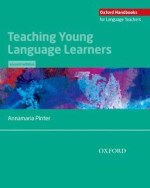
Teaching Young Language Learners. Second edition. A. Pinter (2017) Oxford University Press. ISBN 978-0-19-440318-4, pp 216. This a new edition of an ELT teacher training classic which has been thoroughly updated so that it incorporates recent findings in child development and child psychology, as well as recent developments in teaching foreign languages to young learners. The book is divided into 12 chapters. Chapter 1 looks at the learning and development of a child, Piaget’s ideas and their critique, the role of social constructivism, learning environments and the role of self and the group in the learning process. Chapter 2 looks at learning the first language at home and at school, while Chapter 3 looks at learning second languages at home and at school. Chapter 4 looks at the role of policy in primary ELT programmes such as contextual factors, expectations, exposure to English and teacher skills. Chapters 5, 6 and 7 are devoted to lesson content, and look at teaching listening and speaking, reading and writing, and vocabulary and grammar. The remaining chapters look at material design and material evaluation, assessment, intercultural awareness and research in primary English classroom. Across all chapters, the book contains a systematic incorporation of ideas related to technology, and reference to recent ELT issues such as CLIL and 21st century skills.
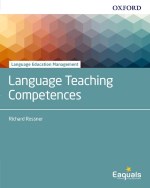
Language Teaching Competences. R. Rossner (2017) Oxford University Press. ISBN 978-0-19-440326-9, pp 179. This a new and very welcome publication for experts in the field, experienced teachers, mentors, teacher trainers and trainers of teacher trainers. It looks at and explains the competences that need to be part of professional development such as training and qualifications, key competences and professionalism. It introduces the EPG concept (European Profiling Grid), its origins and rationale, as well as its validation and scope. Then it provides guidance on how EPG can be used with language teachers, trainers and managers for teacher training and development. The book also presents the role of Eaquals in the EPG project, its context and challenges. (For more on Eaquals check www.eaquals.org). This book has a good theoretical background, presented in a clear way, in grid form where necessary, and a number of activities which can be used in or adapted for training sessions.

Please check the Methodology & Language for Primary course at Pilgrims website.
Please check the Methodology & Language for Secondary course at Pilgrims website.
Please check the CLIL for Primary course at Pilgrims website.
Please check the CLIL for Secondary course at Pilgrims website.
Please check the Creative Methodology for the Classroom course at Pilgrims website.
Please check the 21st Century thinking Skills course at Pilgrims website.
Please check the British Life, Language and Culture cours at Pilgrims website.
Please check the Special Needs & Inclusive Learning course at Pilgrims website.
Please check the Teaching English Across the Curriculum cours at Pilgrims website.
Please check the Methodology and Language to Teach Business People at Pilgrims website.
Please check the How to be a Teacher Trainer course at Pilgrims website.


|